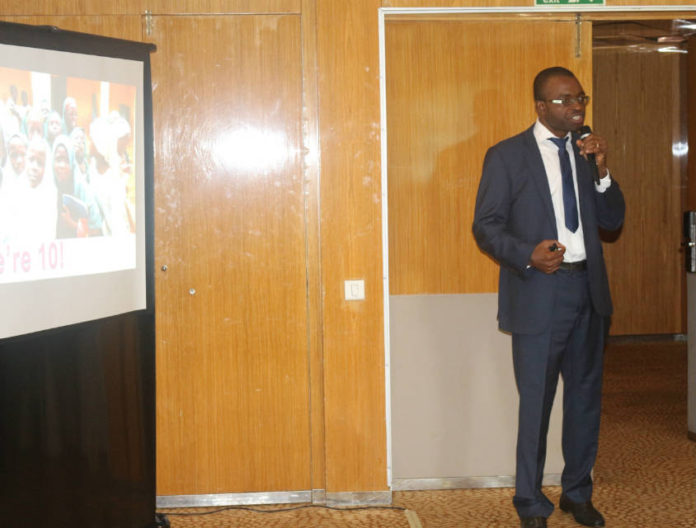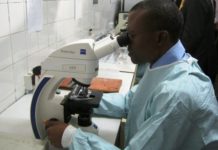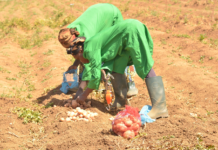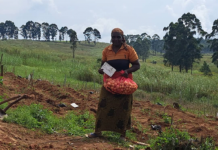
This is even as the report, “State of the World Population 2016”, which was launched in Abuja by the United Nations Population Fund (UNFPA) on Tuesday, also hinted that 43 percent of Nigerian girls are made pregnant before they are 18 years of age.
Giving an overview of Nigeria’s portion of the report, the Deputy Country Representative, UNFPA, Mr. Eugene Kongnyuy, said that 11 million of children in junior secondary age are out of school.
“Nigeria alone accounts for 47 percent of out-of-school girls. The out-of-school rate differs between boys and girls. There are more boys in school than girls, although the out-of-school is still high for both. We equally noticed that even in some areas, like in the north, two-third of girls participate in generating household income. Less than one percent of them have a bank, which implies that they are working for other people, they are not paid for what they are doing.
“Almost 11 million of children in junior secondary age are out of school. And, almost five million children of primary school age are out school. Now, this is what we do concerning child labour when we do analysis of data from different countries. We realise that child labour rates are higher in countries with the highest proportion of 10-year-old population.
“What does this imply? It implies that when there are many children, and this is because in a family, you have 10 children, and you are not ready to feed those 10 children. They have to work. So, there must be child labour somewhere. Dependency ratio here is high. In those countries, they force children to work,” Kongnyuy said.
The theme of the report, “10: how our future depends on a girl at this decisive age”, focused on the fate of 10-year-old girls worldwide, and sought to ensure that girls get adequate care and support they need from their parents, society and government to enable become successful in future.
While emphasizing her increased relevance to global polity by 2030, the report linked the 10-year-old girl with attainment or otherwise of the Sustainable Development Goals, (SDGs).
“If we look at data from Nigeria, we find that 43 percent of girls get married before 18, and 17 percent of them even before 15. We notice that for girls that are not in school, the percent is even higher, it is 82 percent. They will get married before 18. But, this varies between states. In the South-East states, it is just 10 percent. In the North-West, it is 75 percent. You see how things happen in geographic variations.
“For children, who have completed secondary school, only 13 percent of them get married (immediately) after secondary school. This is disastrous, we have to change this. We must change. We cannot achieve the SDGs, if these figures remain the way they are,” Kongnyuy said.
He further hinted that more than half of 10 years old girls are living in countries with highest level of gender inequality, and that, if countries of the world do not tackle discrimination, the expected rate of growth would not be achieved.
Kongnyuy also listed the obstacles to girl-child wellbeing to include health challenges, violence, education, lack of economic opportunities, denial of rights, and called for laws against harmful practices, including guaranteeing gender parity for children.
Speaking at the launch, the Chairman, National Population Commission (NPC), Mr. Eze Duruiheoma, called for improved care for the girl child at the event.
Duruiheoma was represented by the Commissioner representing Zamfara State in the Commission, Alhaji Yusuf Anka.
“Data from the 2006 Population and Housing Census indicate that Nigeria’s 10 year old girls was 1,763,122 or 1.3 percent of the total population. By 2016, the population of the teenage girl has increased to 2,374,900.
“At the national level, the conditions of the 10-year-old girls and other teenage girls are not in any way better; neither are the burdens they carry lighter. Data from the Nigeria Demographic and Health Survey (NDHS) 2013 indicate that an estimated 23 percent of women aged 15 and 19 years have begun childbearing, of which 17 percent have had their first child and five percent are pregnant with their first child.
“The pititable condition of the teenage girls is not consisten with our dreams to build a healthy, prosperious and stronger nation.
“We must constantly remind ourselves that the welfare of the present and future generations of Nigerians depend on decisions we make today and there cannot be a better or smarter decisions than to invest in the education, health and general wellbeing of the 10 year-old girl and other teenage girls,” Duruiheoma stated.
He called for domestication of the Child Rights Act by states, and that the law should be fully enforced with adequate punishment for its violators.

























